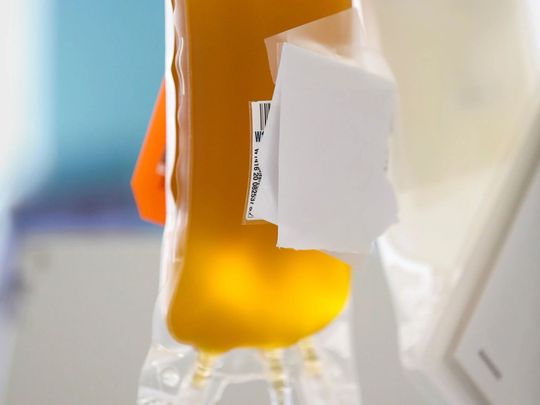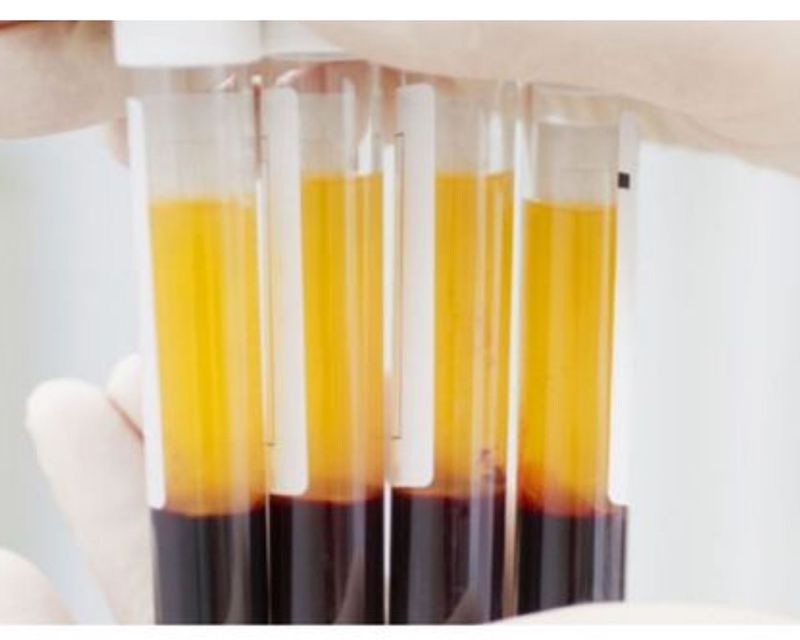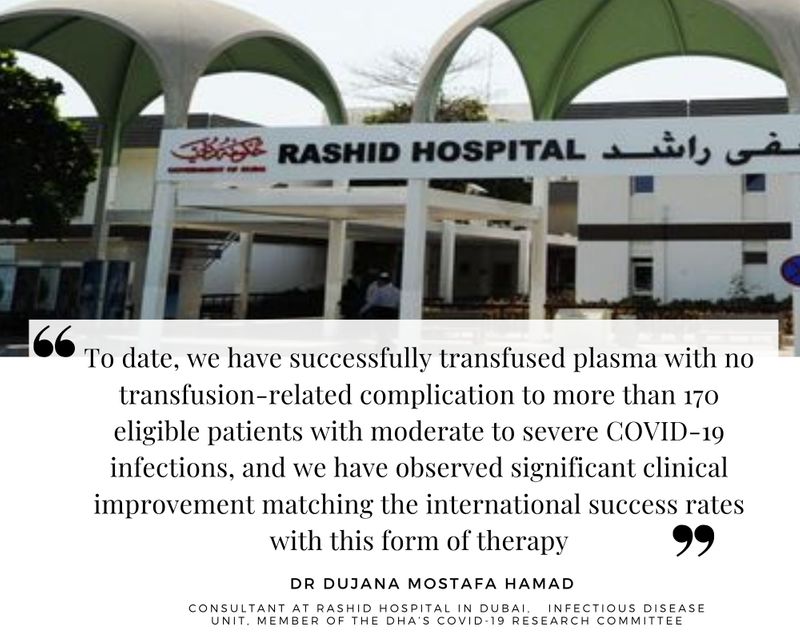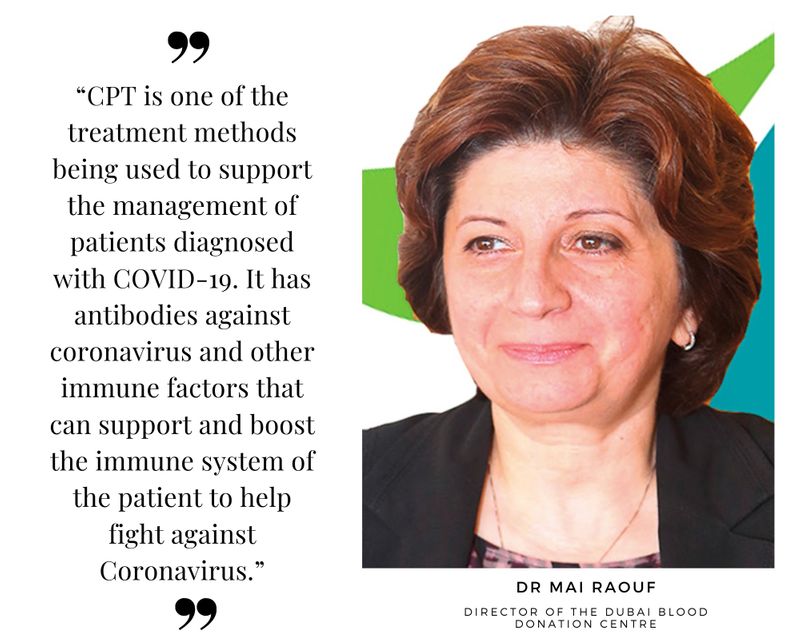
Highlights
- Convalescent plasma therapy (CPT), blood from recovered patients, has been one of the weapons of choice in treating severe COVID-19 cases
- 3 recent studies show on the efficacy of CPT
- Its efficacy depends on the patient’s age
- A Dubai study shows a critical factor is giving it early enough
DUBAI: Scientists are debating the benefits of convalescent plasma therapy (CPT) on COVID-19 patients.
While the world awaits a good vaccine, CPT has become one of clinicians’ weapons of choice since the start of out of SARS-CoV-2, the virus behind COVID-19.
Historically, CPT has shown potency. It’s been used in major outbreaks since the early 20th century. It was credited for reducing deaths during the 1918 “Spanish Flu”, 2003 SARS, and 2009 influenza H1N1 pandemics.
Last resort
The use of CPT is part of immunotherapy (prevention or treatment of disease with substances that stimulate the immune response). A vaccine is another example of immunotherapy. But it’s not available just yet, though many vaccine trials are ongoing.
Against COVID-19, CPT has been used as a last resort, specially in treating severely-ill patients. It is thought that virus-specific antibodies in convalescent plasma improve survival rate of patients with serious cases.
Previous reports have shown treatment with CPT from recovered patients reduces hospital stay and mortality.
But does CPT really work on COVID-19?
The quick answer: Yes and No.
Key points:
One study conducted in China and published in Chest this month reported four critically-ill patients survived, which doctors attributed to CPT.
Moreover, several case series of CPT use in patients with COVID-19 have shown a possible benefit, according to Jama.
The UAE has used CPT to successfully treat severely ill COVID-19 patients.
US FDA has approved the use of CPT as an “investigational drug”.
Historical precedents
CPT has been used as a treatment option for COVID-19 in many parts of the world. This is mostly due to good historical precedents and the absence of knock-out SARS-CoV-2 (severe acute respiratory disease coronavirus 2) antivirals at the moment.
Most published CPT studies on these diseases, however, were case series and “retrospective” comparisons of treated and non-treated individuals. These studies, however, were “uncontrolled”, accusing to Jama. Therefore, CPT’s efficacy in critically-ill patients with SARS- CoV-2 infection remains unclear.
Here’s what the current published clinical data, and preliminary studies show:
1. Randomised trial (truncated): Inconclusive result
In this trial, CPT showed no effect on elderly (mean age: 70) with severe COVID-19 during the 28-day study of 103 patients.
The trial results, published in the Journal of American Medical Association (Jama), states that CPT has "no statistically significant therapeutic effect" on patients with severe cases, especially for older patients.
The study, however, was significant: It was first randomised CPT clinical trial during an active epidemic for patients with COVID-19, reported Jama. It also used well-characterized plasma units with ”a high titer of antibody to SARS-CoV-2”. It means the plasma used on patients was robust.
“It was an important accomplishment to conduct a carefully controlled trial during a pandemic with an entirely new highly contagious disease that stressed health systems in an unprecedented way,” the journal noted.
The results, published on June 3, 2020.
One group — the experimental group — has the intervention (new treatment) being assessed, while the other — called the "control" group — has an alternative condition, such as a placebo or no intervention.
Study flaw
The study, however, had one major flaw. It aimed to enroll 200 patients, but was ended with only 103 patients (randomisation was stratified by disease severity).
The reason: new cases were unavailable for inclusion because the COVID-19 outbreak in China was being contained. In short, the trial was stopped halfway through planned enrollees. One outcome from this study was that it’s “underpowered”, Jama stated.
The 103 patients were randomised, with median age of 70 years. The study included 60 male (58.3%), and 101 (98.1%) completed the trial.
The research team was led by Dr Ling Li of the Institute of Blood Transfusion, CAMS and Peking Union Medical College, in Chengdu, and Dr Wei Zhang, of Guanggu District Maternal and Child Health Hospital of Hubei Province, in Wuhan.
There’s one significant result in this study: Clinical improvement occurred within 28 days in 51.9% (27/52) of the convalescent plasma group — against 43.1% (22/51) in the control group — an 8.8% difference.
Among those with severe COVID-19 infections, the primary outcome occurred in 91.3% (21/23) of the convalescent plasma group — against 68.2% (15/22) of the control group — a 23.1% difference.
Among those with life-threatening COVID-19, the primary outcome occurred in 20.7% (6/29) of the convalescent plasma group versus 24.1% (7/29) of the control group.
Researchers, moreover, noted "no significant difference” in 28-day mortality (15.7% vs 24.0%) or time from randomisation to discharge (51.0% vs 36.0% discharged by Day 28).

Viral test
However, the researchers found that CPT was associated with a “negative conversion rate of viral PCR at 72 hours in 87.2% of the convalescent plasma group vs 37.5% of the control group”.
87.2 %
percentage associated with a “negative conversion rate of viral PCR at 72 hours of the convalescent plasma group (against 37.5% of the control group) in the Chinese clinical study. [https://bit.ly/2DdIRA5]This can be taken to mean that using the highly accurate molecular test (PCR), negative result of SARS-CoV-2 viral RNA test among the CPT group at Day 3 is quite high, at 87.2%.
Dr Ling Li’s team, however, concluded that given the evidence on hand, CPT had no statistically significant effect on those with severe or life threatening COVID-19 infection". “Among patients with severe or life-threatening COVID-19, convalescent plasma therapy added to standard treatment, compared with standard treatment alone, did not result in a statistically significant improvement in time to clinical improvement within 28 days.”
The researchers pointed out that their interpretation is limited by the trial’s early termination, which resulted in the inability to detect any important difference.
2. Dubai trial: 170 patients successfully treated with CPT
Dubai clinicians have reported successful treatment of at least 170 COVID-19 given CPT. A research team at the Infectious Diseases Department at Dubai’s Rashid Hospital administered the transfusion.

The Dubai clinicians point to “very good” patient outcomes as a result of CPT. Doctors reported there were "no complications” on patients following successful treatment.
Dr Dujana Mostafa Hamad, Consultant Physician at Rashid Hospital’s Infectious Disease Unit and Member of the DHA’s COVID-19 Research Committee, said: “We have observed significant clinical improvement matching the international success rates with this form of therapy.”
The Dubai team will publish their data soon. Dr Dujana Mostafa Hamad, Consultant Physician at Rashid Hospital’s Infectious Disease Unit and Member of the DHA’s COVID-19 Research Committee, said: “The research team is reviewing the outcome data in detail and results will be published soon.”
The key to a successful treatment, according to the team: a head start against the diease. This means that for best results, CPT transfusion must be administered at the earliest on confirmed COVID-19 patients, said researchers.

“Patients undergoing CPT have shown very good result — especially when treatment was started early in the course of the disease,” said Dr Hamad. “This is similar to what has been published in different part of the world about using the convalescent plasma to treat patients with COVID-19.”
3. Chest study: Critically ill patients (4 patients)
Another study published this month in Chest reported how four critically-ill patients survived. Doctors attributed this to CPT, according to the study published in the July 2020 edition of Chest, published by the American College of Chest Physicians.
All four patients (including a pregnant woman) were confirmed SARS-CoV-2 patients and recovered from infection eventually after battling with acute respiratory disease syndrome, septic shock and had to be intubated. They were administered CPT at Days 16 to 19.

The Chinese research team who published study, however, stated there was a need for randomised trials to eliminate the effect of other treatments and investigate CPT’s safety and efficacy.
It outlined data collection from individuals who have recovered from COVID-19 (COVID-19 convalescent plasma), including patient eligibility, collection of COVID-19 convalescent plasma, donor eligibility and donor qualifications, labeling, and record keeping.
How is blood plasma stored?
WHO guidelines state that donated convalescent whole blood (CWB) or plasma (CP) should be stored between +20 C and +60 C (never frozen), preferably in a separate blood bank refrigerator dedicated to CWB/CP units, fitted with a temperature monitoring system and alarm.
In case a separate refrigerator is not available, these units should be stored on a separate, labelled shelf within the refrigerator.
How long can plasma last in storage?
It may be stored up to 35 days if collected in citrate phosphate dextrose with added adenine (CPDA-1). The storage duration depends on the anticoagulant and preservative solution in the blood collection bag, and must strictly follow manufacturer’s instructions.
CP separated from whole blood donations or collected by apheresis may be stored as ‘Liquid Plasma’ between +20 C and +60 C in blood bank refrigerators for up to 40 days.
Alternatively, it may be frozen either within 8 hours of collection as ‘Fresh Frozen Plasma’ or within 18-24 hours of collection as ‘Plasma Frozen Within 24 hours’ and stored for up to 12 months at or below -180 C in a controlled plasma freezer.
How is blood plasma separated?
Medical technologists work in labs and use plasma separation machines, usually a centrifuge, to separate plasma. There are also membranes that can be used for one-step plasma separation without a need for centrifugation.
The WHO prescribes that, where there are no facilities to prepare CP by centrifugation, it could be separated from CWB collected in “double bags”. A CWB unit can be stored vertically for 24 hours between +20 C and +60 C, the supernatant (the liquid lying above a red blood residue) plasma can then be transferred into the secondary bag, and stored as liquid plasma.
The CWB/CP units should also be transported in temperature controlled conditions, as per WHO guidelines. https://apps.who.int/iris/bitstream/handle/10665/135591/WHO_HIS_SDS_2014.8_eng.pdf;jsessionid=53B8381200BE9EE28C792CEFC15203FD?sequence=1








